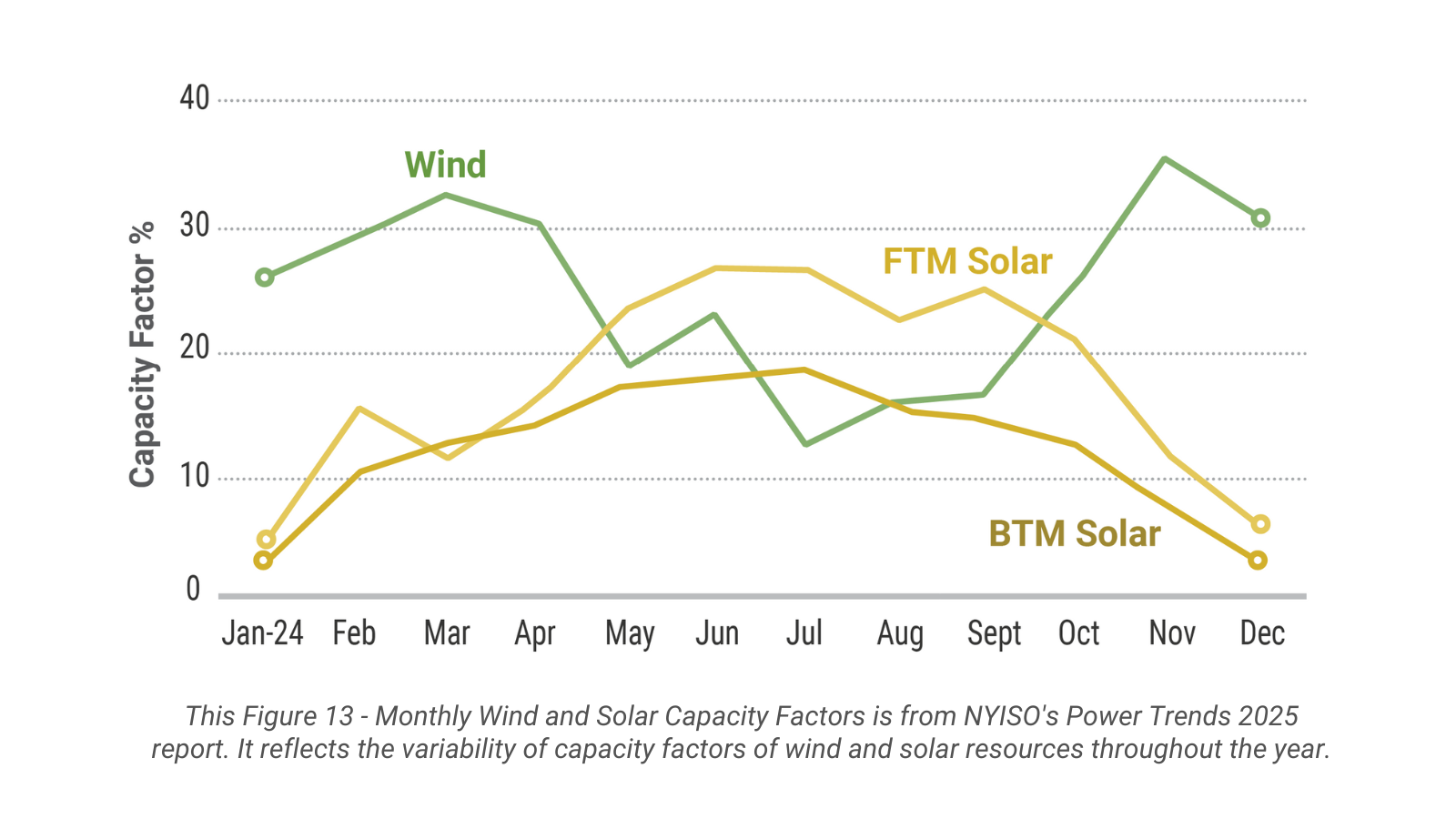How Capacity Factors Impact New York’s Energy Future

As the days grow shorter and winter draws near, it’s a good time to examine the critical role of capacity factors in assessing generator output.
A generator’s “capacity factor” refers to how often the plant runs at maximum output over a given time period. In theory, a plant with a capacity factor of 100% would run at full power, full time.
Capacity factors are influenced by aspects like weather, fuel costs and availability, economics, and necessary maintenance.
For example, in the case of wind and solar, a lower capacity factor is largely due to the intermittent nature of the plant’s fuel supply. The contributions of wind and solar to the electricity supply varies depending on the weather, time of day, and, as viewed in the chart above, the time of year.
In contrast, nuclear and certain hydro resources possess high capacity factors, producing great amounts of power most of the time. These resources also provide predictability for grid operators who must balance load with supply to meet demand as it fluctuates.
The capacity factors of fossil fuel-based units can vary widely. Gas-fired generators, particularly with combined-cycle turbines, provide baseload power and have high capacity factors. Others, like peaking plants, have a lower capacity factor because they are used less frequently.
The relative capacity factors of different types of generation are critical considerations in reliability planning and operations at the NYISO. Understanding the impact of capacity factors helps us determine what future grid investments are needed.
A NYISO report on the state’s renewable resource fleet evaluated the growth and performance of wind and solar resources over the last year to determine the average capacity factor for future grid planning purposes.
The report highlights how wind resources tend to operate at higher capacity factors during the winter months, while solar resources achieve higher capacity factors in the summer. The inability to precisely predict energy output from these resources requires other, dispatchable resources to be available to grid operators.
From an operational perspective, each resource has its own benefits and limitations. While wind and solar resources cannot be dispatched like other generators on the system, they do produce low-cost, emissions-free energy on the grid.
This is an important issue to consider as the state advances the goal of decarbonizing the grid while striving to keep the system reliable for all New Yorkers.
